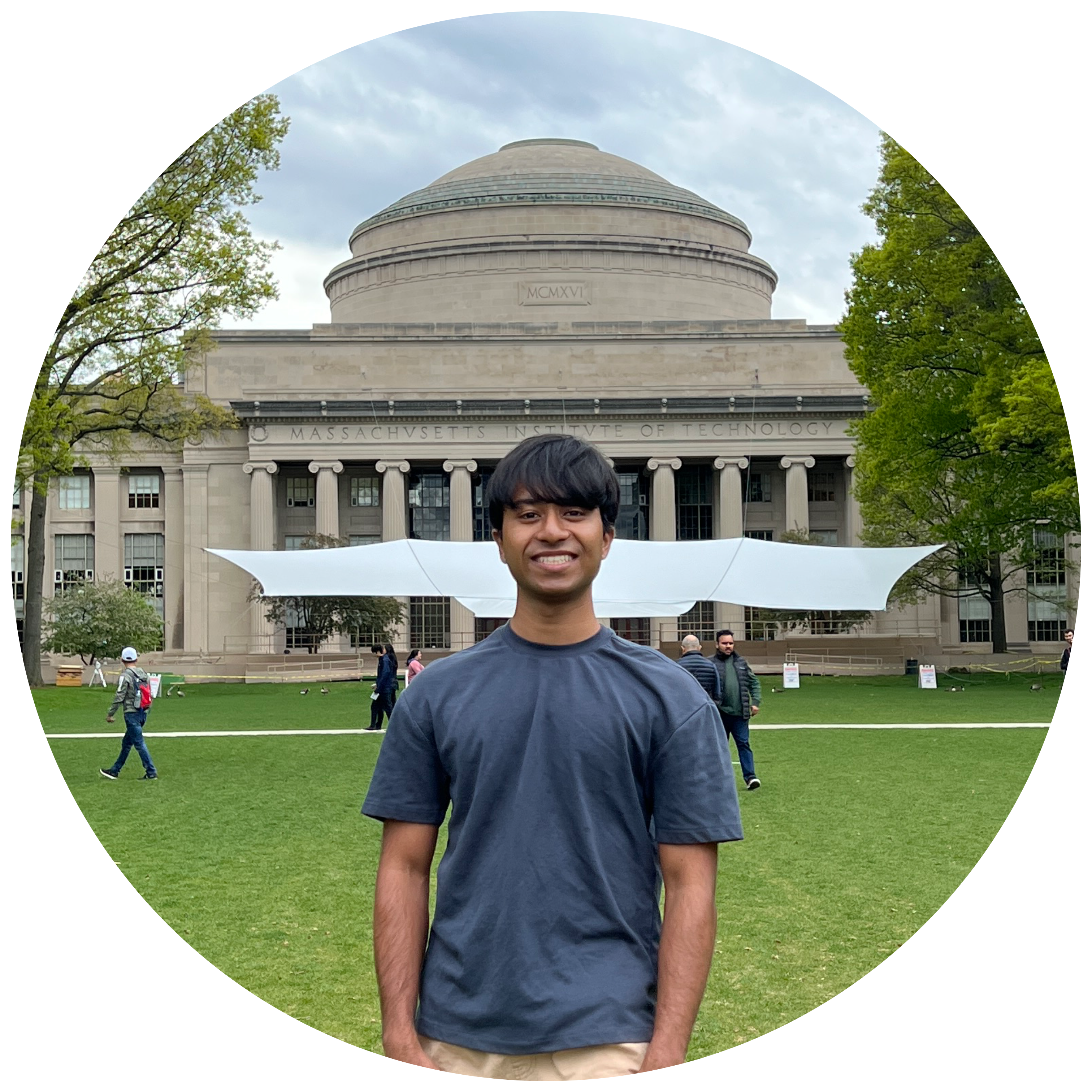|
I'm an MS in Machine Learning student at Carnegie Mellon University.
Looking for Quant Research / ML internships for Summer 2026 — open to leads and opportunities!
Before starting my MS, I was a Research Engineer - Intern at Ola Krutrim, India's first AI unicorn, where I worked on AI agents, moderation, model evaluations, and DPO. Before joining Kurtrim, during my undergraduate studies, I worked with 5 research labs spanning 3 countries, researching a variety of problems. To date, I have worked on 6 research papers and 2 theses. I graduated with a Department Gold Medal, earning a Bachelor's (Honours) in Aeronautics with a minor specialization in Data Science from Manipal Institute of Technology, India. In 2024, I spent a wonderful six months working on my undergraduate thesis at Harvard University in the Shafiee Lab, supervised by Prof. Hadi Shafiee. I'm deeply grateful for the funding and mentorship I received during this period. My research focused on multi-instance learning, diffusion model conditioning, and ensemble models for human fertility applications. My longest research experience—spanning 15 months—was with Carnegie Mellon University in the Xu Lab, supervised by Prof. Min Xu. I worked remotely with the lab, which allowed me the flexibility to contribute over such an extended period. My research there focused on few-shot object detection and in-sensor computing. I'd love to chat about AI and meet interesting people, feel free to reach out for a virtual coffee chat! Email / LinkedIn / LeetCode / Github / Google Scholar / YouTube |

|

|

|

|

|

|

|
|
|
My current research interests lie at the intersection of multi-modal, multi-agent systems—especially how they integrate with users and with each other to enable more intelligent, interactive, and helpful AI. |

|
Joseph Michael Hardie, Sungwan Kim, Zehua Yin, Juhyeon Chun, Jack Minahan, Jisan Kim, Teertha Ayanji, Prudhvi Thirumalaraju, Manoj Kumar Kanakasabapathy, Manasvi Alam, Aditya Vardhan Reddy Katkuri, Gianna Gallagher, Harshitha Mariadoss Yuvaraj, Ahmed Shokr, Ella Weinmann, Daniel Robert Kuritzkes, Jonathan Zheng Li, Raymond Taeyong Chung, Jorge Mera, Hadi Shafiee Paper Advanced Materials Technologies, 2025 We present VISTA, a low-cost, electricity-free microfluidic cartridge paired with a deep learning–enabled smartphone app for automated ELISA diagnostics. Powered by an adversarial neural network, the system interprets visual bubble-based immunoassay results directly from smartphone images. VISTA accurately detects viral pathogens like SARS-CoV-2 and HCV from patient samples in under 45 minutes, matching lab-grade sensitivity—all without the need for trained personnel or lab infrastructure. |

|
Manoj Kanakasabapathy, Prudhvi Thirumalaraju, Hemanth Kandula, Tinendra Kandula, Aditya Vardhan Reddy Katkuri, C Cipriano, J E Malmsten, N Zaninovic, Charles L. Bormann, Hadi Shafiee Paper Human Reproduction, European Society of Human Reproduction and Embryology (Oral), 2025 We critically evaluated AI models used for embryo selection in IVF, revealing that conventional single-instance learning models—despite similar accuracy—show alarming variability in embryo ranking. Using 50 replicate DL models on real clinical data, we found inconsistency in identifying viable embryos, with some models mistakenly favoring degenerate embryos. Our results highlight the urgent need for more stable, robust AI architectures to ensure reliable, clinically safe decisions in embryo selection. |

|
Sukhvinder Singh Bamber, Aditya Vardhan Reddy Katkuri, Shubham Sharma, Mohit Angurala Paper / Code Computers & Security, 2024 We propose a deep learning-based intrusion detection system (IDS) to enhance network security against sophisticated cyber-attacks. Using the NSL-KDD dataset, the system integrates Recursive Feature Elimination (RFE) and a Decision Tree classifier for feature optimization, followed by evaluation of various deep learning models, including CNN-LSTM. |

|
Aditya Vardhan Reddy Katkuri, Hakka Madan, Narendra Khatri, Antar Shaddad Hamed Abdul-Qawy, K. Sridhar Patnaik Paper Array, 2024 We provide a systematic review of deep learning-based computer vision approaches for autonomous UAV applications across four domains: sensing, landing, surveillance, and search and rescue. By analyzing recent Scopus-indexed studies, we highlight trends, challenges, and emerging opportunities, emphasizing the growing role of AI-driven computer vision in UAV technologies. |

|
Hemanth Kandula, Victoria S. Jiang, Manoj Kanakasabapathy, Prudhvi Thirumalaraju, Niveditha Kovilakath, Tinendra Kandula, Aditya Vardhan Reddy Katkuri, Manasvi Alam, Irene Souter, Charles L. Bormann, Hadi Shafiee. Paper American Society of Reproductive Medicine (ASRM), Fertility and Sterility, 2024 (Poster) We propose an ensemble AI-based framework for predicting live birth rates by integrating patient characteristics, IVF cycle outcomes, and embryo imaging data. This approach shifts from traditional embryo-centric predictions to comprehensive cycle-based forecasting, offering improved tools for personalized counseling and decision-making in family planning. |

|
Undergradaute Thesis Harvard University, 2024 I explored computer vision and machine learning techniques to enhance clinical decision-making in IVF procedures. Specifically, I worked on diffusion models, multi-instance learning models, and CNNs. Conducted in collaboration with Boston’s Brigham and Women’s Hospital, this research aims to improve live birth outcomes through AI-driven solutions. |

|
Summer Thesis Indian Institute of Technology Delhi, 2023 I explored a Physics-Informed Neural Network (PINN) for predicting dependent shoulder and elbow torque, combining physics-based modeling with CNN architectures. Using surface EMG signals from upper arm muscle groups, the approach bridges data-driven and physics-informed methods, offering insights into musculoskeletal modeling for human assistive robotics. |